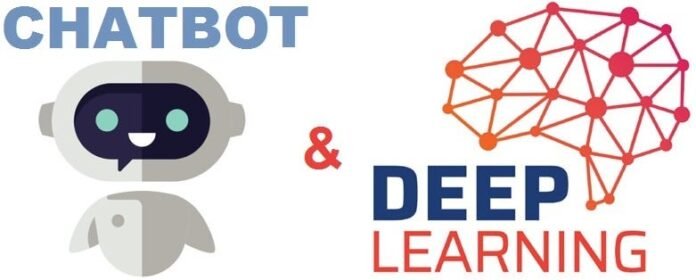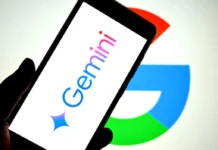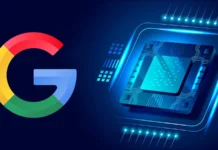Introduction
In today’s digital age, chatbots have become an integral part of our lives. From customer service interactions to virtual assistants, these AI-powered conversational agents have revolutionized the way we communicate with technology. Deep learning, a subfield of machine learning, has played a pivotal role in enhancing the capabilities of chatbots. In this article, we will explore the fascinating world of deep learning for chatbots and delve into the advancements brought forth by ChatGPT4, the latest iteration of OpenAI’s chatbot model.
Deep Learning: Unleashing the Power of Neural Networks
What is Deep Learning?
Deep learning is a branch of artificial intelligence that utilizes neural networks to mimic the human brain’s ability to learn and make decisions. Unlike traditional machine learning algorithms, deep learning models can automatically discover intricate patterns and relationships in data without explicit programming. By leveraging the power of neural networks with multiple layers, deep learning algorithms have achieved remarkable success in various domains, including computer vision, natural language processing, and speech recognition.
The Role of Deep Learning in Chatbots
Deep learning has played a transformative role in advancing the capabilities of chatbots. Traditionally, chatbots relied on rule-based systems that followed predefined scripts. However, these rule-based approaches often fell short when confronted with the complexity of human language and the wide range of user inputs. Deep learning-based chatbots, on the other hand, can learn from vast amounts of data and adapt their responses to better suit the context and user preferences.
ChatGPT4: Enhancing Conversational AI
Introducing ChatGPT4
ChatGPT4 is the latest iteration of OpenAI’s chatbot model, building upon the success of its predecessors. Powered by deep learning techniques, ChatGPT4 pushes the boundaries of conversational AI by exhibiting more human-like responses, improved contextual understanding, and enhanced coherence. With a vast knowledge base and the ability to generate creative and informative responses, ChatGPT4 is poised to revolutionize the way we interact with chatbots.
Advancements in Natural Language Understanding
ChatGPT4 leverages sophisticated deep learning architectures, such as transformers, to enhance its natural language understanding capabilities. These models can effectively capture contextual information from previous user inputs, allowing ChatGPT4 to generate more accurate and contextually relevant responses. The advancements in natural language understanding enable ChatGPT4 to engage in more meaningful and coherent conversations, making it a valuable tool in various applications, including customer support, content generation, and language translation.
Contextual Reasoning and Coherence
One of the significant challenges in developing chatbots is maintaining coherence and context throughout a conversation. ChatGPT4 addresses this challenge by employing deep learning techniques that enable it to reason and respond based on the conversation history. By understanding the context and maintaining a coherent dialogue flow, ChatGPT4 can provide more accurate and relevant responses, creating a more immersive and natural conversational experience.
FAQs (Frequently Asked Questions)
Q: How does deep learning enhance the performance of chatbots?
Deep learning empowers chatbots with the ability to learn from vast amounts of data and adapt their responses to different contexts. This enables chatbots to generate more accurate, contextually relevant, and human-like responses, significantly enhancing their performance.
Q: What sets ChatGPT4 apart from previous chatbot models?
ChatGPT4 represents a significant advancement in conversational AI. It exhibits improved contextual understanding, enhanced coherence, and more human-like responses. By leveraging deep learning techniques, ChatGPT4 sets a new benchmark in the capabilities of chatbot models.
Q: Can ChatGPT4 be used in customer support applications?
Absolutely! ChatGPT4’s advanced natural language understanding and contextual reasoning make it well-suited for customer support applications. Its ability to engage in meaningful conversations and provide accurate responses can greatly enhance the customer service experience.
Q: How does ChatGPT4 maintain coherence throughout a conversation?
ChatGPT4 utilizes deep learning techniques to analyze the conversation history and understand the context. By reasoning based on the context, it can generate coherent responses that align with the ongoing conversation, ensuring a smooth and natural dialogue flow.
Q: Can ChatGPT4 be integrated into existing chatbot platforms?
Yes, ChatGPT4 can be integrated into existing chatbot platforms through APIs and SDKs provided by OpenAI. This allows developers to leverage the advanced capabilities of ChatGPT4 in their own applications and systems.
Q: What is the future of deep learning for chatbots?
The future of deep learning for chatbots is bright. As deep learning techniques continue to evolve, chatbots will become even more proficient in understanding user intent, generating accurate responses, and providing personalized experiences. With ongoing advancements, deep learning will undoubtedly shape the future of conversational AI.
Conclusion
Deep learning has ushered in a new era for chatbots, transforming them into intelligent conversational agents capable of understanding and responding to human language with remarkable accuracy. ChatGPT4, powered by deep learning techniques, represents the pinnacle of conversational AI, delivering human-like responses, enhanced contextual understanding, and improved coherence. As we venture further into the realm of deep learning for chatbots, the possibilities for seamless human-machine interaction are truly endless.











